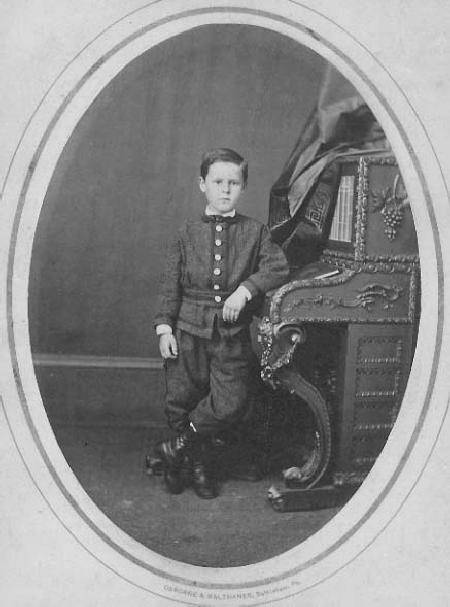
Figure 1.--This unidentified boy from Bethleham, Pennsylvania wears a juvenile-styled suit about 1870. Note the collar buttoning jacket and decorative use of buttons. Also notice the long-cut knee pants. The boy looks to be about 6 years old. |

|
Age 6 years is a turning point in boy's life. TYhis is becuse 6 was the sage that boys generally began school. pre-schools were not yet commom. America and germany led the way in public eduction. Thus more boys in Aerica abd Germany attnded school thn in other countries. And this genberally begn at age 6 years. Most boys were breeched by age 6 years and those whi had not yet been beeched were before they began school. By age 6, most boys who were not beeched were boys from weathly fanilies being tutored at home. The early ophotograophic record is difficult to assess becuse there was no photograohy. Comfortable fmilies might dress boys in tunic suits or skeleton suits. This is clear from the photogrphic record. School photograpohy became common in the late 19th century, so this pattern is notable clear. Not all boys got suits which were expensive when they turned 6 years. We see a lot of boys wearing plain parerned shirts when photograohy firsta ppeared at mid-century. This appears to have been a financial matter. Suits were expensive. The suits worn by 6-year olds have vaired substantially over time. We see 6 year olds wearing fancy suits with bloomer knickers at mid-century. But there was considerable variation. Most 6 year olds were breeched. One reason for this was school attendance. Age 6 became the standard age for beginning the 1st grde of The public schools. American education system was just developing in the early 19th century. Many boys at 6 years of age were taught at home. This meant that mothers had considerable lattitude as to how boys were dressed and how their hair was done. Some boys at age 6 were not even breeched and might have long curls. Boys that were sent to school at age 6 normally were breeched and had their hair cut. a Thus the development of the public schools had the affect of standardizing clothing and hair sytles. And by the 1890s, most children were cattending the public schools, especially in urban areas. Most 6 year olds wore knee pants in the secoind half of the 20th century. This continued into the 20th century, but bu=y the 1910s we mostly see knicker suits. After world war ii we see 6 year olds wearing booth kncker abd short poants suits. Junior Eton suits, usully with hirt pabts were popular for 6 year olds. Long pants became common for boys in the 1950s, but we still see quite a number of 6-year olds wearinmg short pants suits. This coninued into the 1960s with more and more boys were wearing long pants suits. And bu the 1970s fewer boys were waring suits. Wesee some boys wearing bests rather thn suit jackjets. Thise boys wearing short pants suits, mostly wore the jinior Eton suits. This was, hoeever, becoming style for pre-school boys. By the 21st century, short pabnts xuits were ot common, but boys' suits in general were not very common.
Navigate the Boys' Historical Clothing Web Site:
[Return to the Main U.S. suits specufic age page]
[Return to the Main U.S. suits age page]
[Return to the Main U.S. suits page]
[Return to the Main suit chronology page]
[Return to the Main Norfolk suit country page]
[Introduction]
[Activities]
[Biographies]
[Chronology]
[Clothing styles]
[Countries]
[Bibliographies]
[Contributions]
[FAQs]
[Glossaries]
[Images]
[Registration]
[Tools]
[Boys' Clothing Home]
